Studio Visit
Akira Fujimoto Raises Ecological Consciousness by Transforming Waste Products into Art
An installation at Tokyo's Edition hotel was partly inspired by discarded Christmas trees.
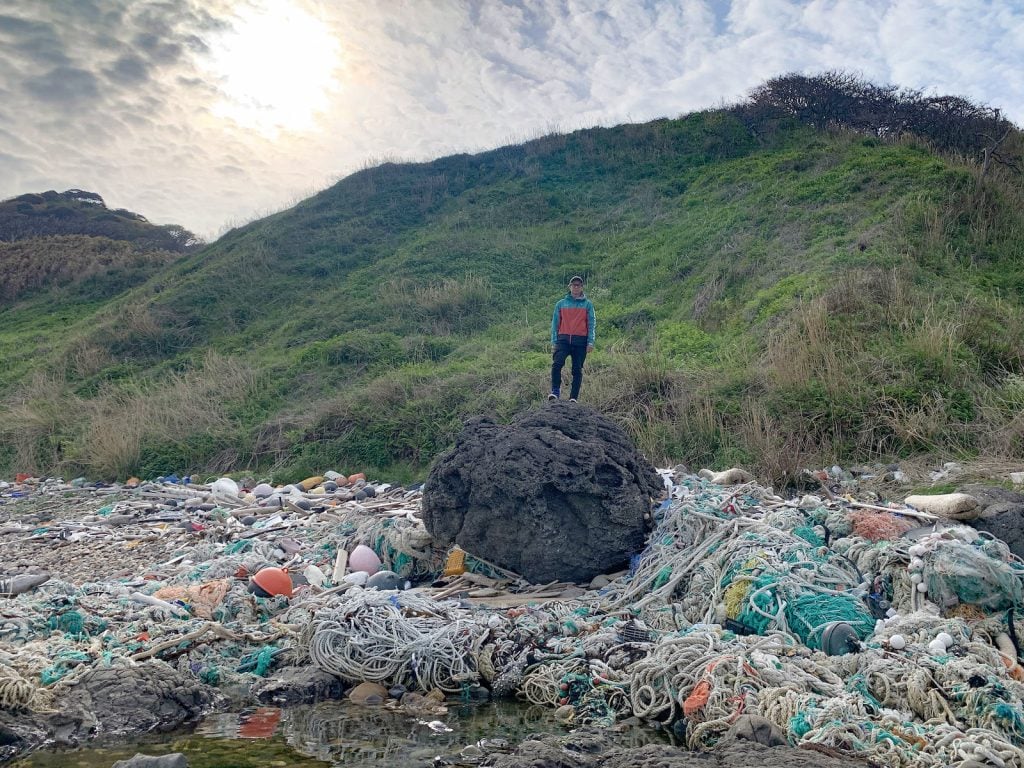
An installation at Tokyo's Edition hotel was partly inspired by discarded Christmas trees.

Artnet News

Visitors to Tokyo’s Edition hotel in the Toranomon district during the holiday season are encountering a “spectacle of sustainable art” in the form of a giant sculpture by Japanese artist Akira Fujimoto. Titled Babel of the Ocean #Nature takes in (2023), it is a distinctive kind of Christmas tree that incorporates vegetation that was already on display in the hotel lobby, placed in a giant, multicolored vase of sorts, which is constructed entirely of refuse that Fujimoto recovered from the seashores of Japan. He thinks of the work, which is on view through December 25, as a way to raise consciousness of ecological issues.

Courtesy Akira Fujimoto.
Since earning a bachelor’s degree in design from Tokyo University of the Arts, Fujimoto has gone on to mount solo exhibitions at galleries including Tokyo’s Kawa Kawanishi Gallery, Walls Tokyo, and the Kawaguchi Municipal Museum of History and Nature in Saitama, Japan, among other venues. He has also appeared in group exhibitions internationally, including at Andrew Freedman House in New York, Suzhou Jinji Lake Art Museum in Suzhou, China, and at venues throughout Japan.
We checked in with Fujimoto about his practice, which, he explains, takes place partly on the beaches where he accumulates the refuse incorporated into his sculptures, partly at borrowed industrial facilities where he processes the materials, and partly in his Tokyo studio. The piece at the Edition hotel bears a kinship to the discarded Christmas trees found outside people’s homes after the holidays, he explains.
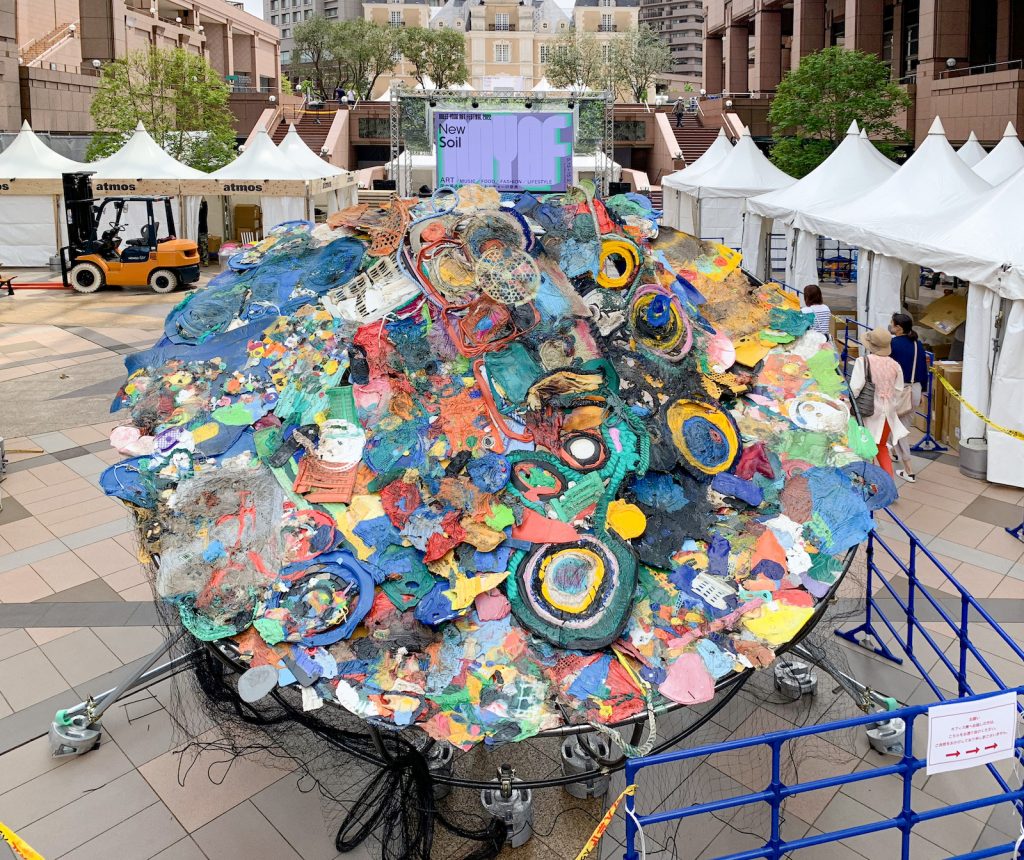
Akira Fujimoto, Last Hope Sculpture, 2022.
Tell us about your studio. What made you choose this particular space over others?
I work primarily in my Tokyo studio, but when I create my marine debris pieces, I prefer to work on the beach where these materials accumulate. The decision to work on the beach is practical—these areas are often remote and inaccessible by road. Large amounts of marine debris wash ashore, and bringing the plastics, which serve as the raw material for my artworks, back to the studio is challenging. Shifting my mindset, I bring my tools directly to the beach, allowing me to create multiple pieces surrounded by a plethora of marine debris. I only take home the pieces I’ve created, allowing me to work at various locations.
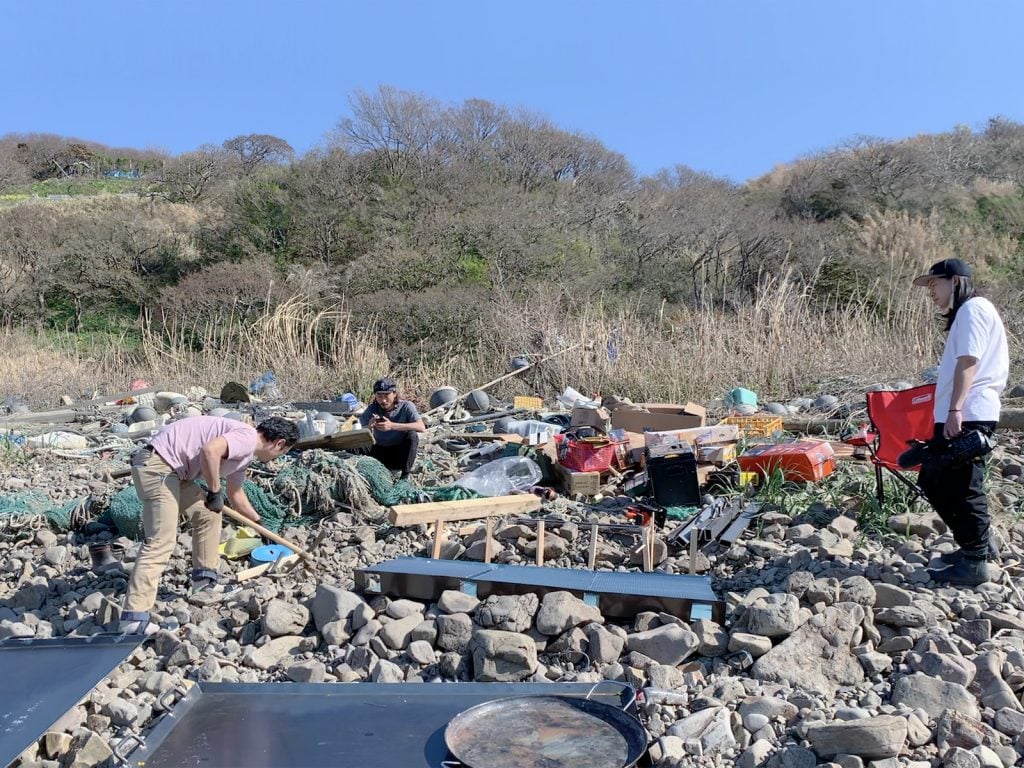
Courtesy Akira Fujimoto.
What is the first thing you do when you start work?
When working on my marine debris pieces, my process begins with bringing tools to the beach. I then create a horizontal baking area on the beach slope, where I collect marine debris (plastics) and cut them into easy-to-handle sizes.
What are you working on right now?
While I typically create small, round pieces suitable for easy transport in a frying pan, I am currently working on a large wall-hanging piece for my “Dig Up” series, measuring 9 meters wide. The individual parts are crafted on the beach, and for such larger pieces, I collaborate with a factory, borrowing their equipment.
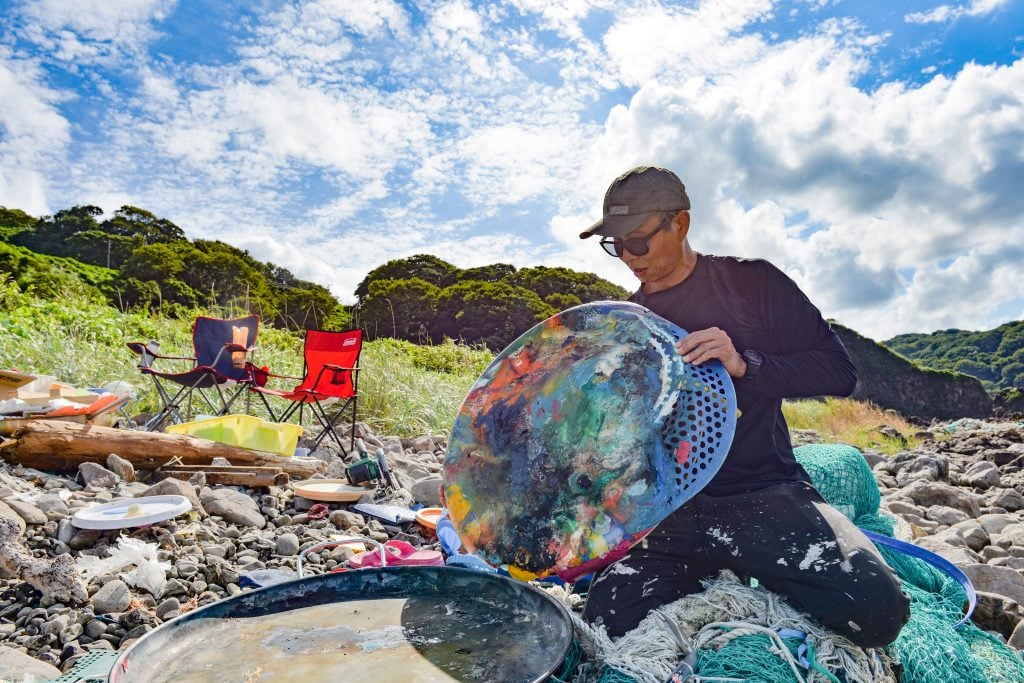
Courtesy Akira Fujimoto.
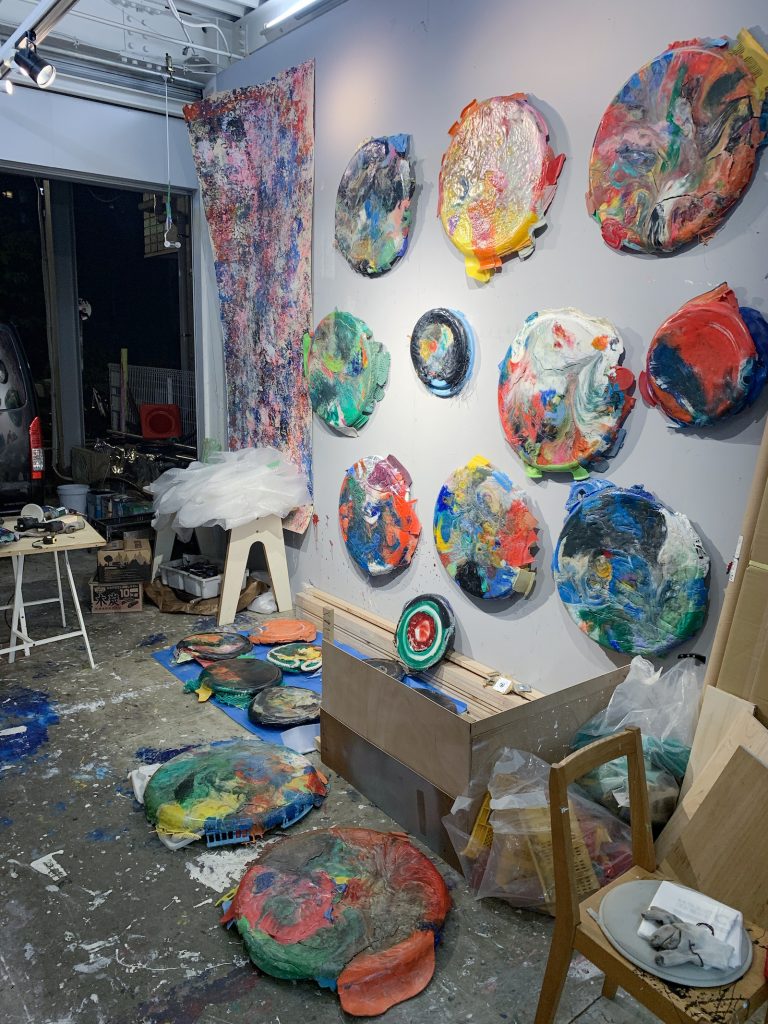
Courtesy Akira Fujimoto.
What tool or art supply do you enjoy working with the most, and why?
When working on the beach, portability is crucial. I rely on battery-powered chainsaws and reciprocating saws to cut plastic into a single mass. Using heat and pressure with a steel plate and charcoal, I melt the plastic into a pancake-like form. The finishing touches take place in my Tokyo studio, where I spend a significant amount of time digging and polishing the plastic.
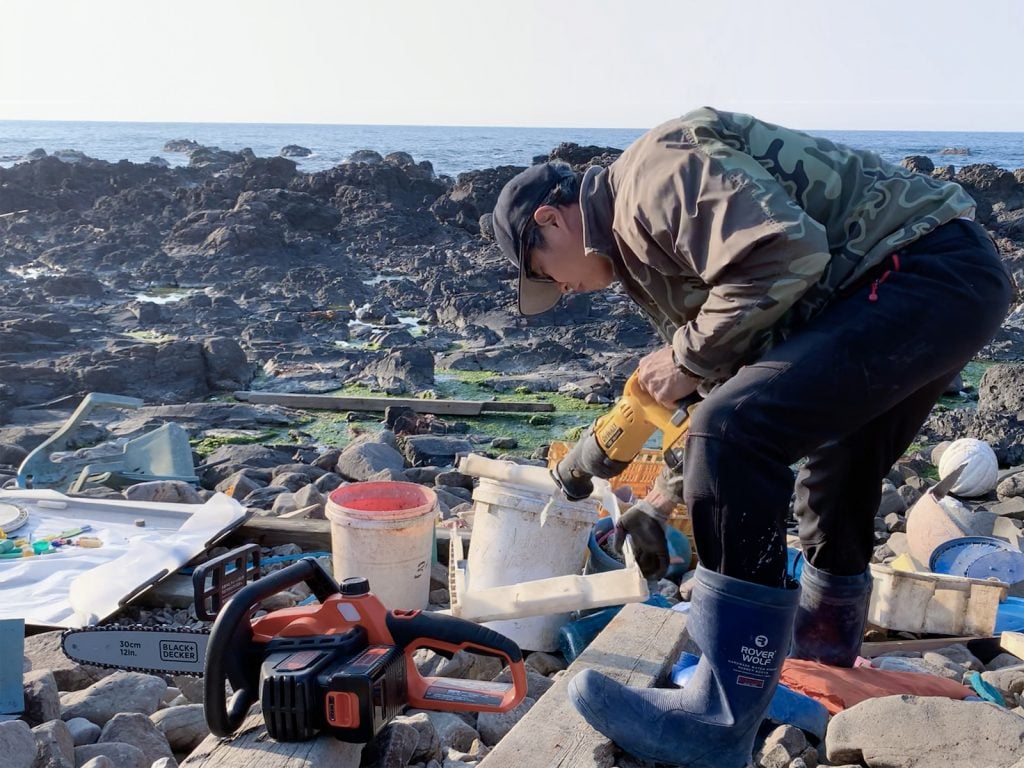
Courtesy Akira Fujimoto.
Your tree is now gracing the lobby bar of the Edition hotel in Tokyo. What do Christmas trees mean to you?
Large Christmas trees, often taken down after December 25, inspired me to propose a new approach to avoid waste. Instead of discarding them, I repurpose the materials for future artworks.
The work is part of your ongoing “Babel of the Ocean” series where you repurpose discarded items that have made their way into the ocean. What is the strangest ocean object you have worked with for this project?
I find inspiration in the natural integration of debris into ecosystems. The work Babel of the Ocean #Nature takes in at Tokyo EDITION Lobby Bar reflects this concept.
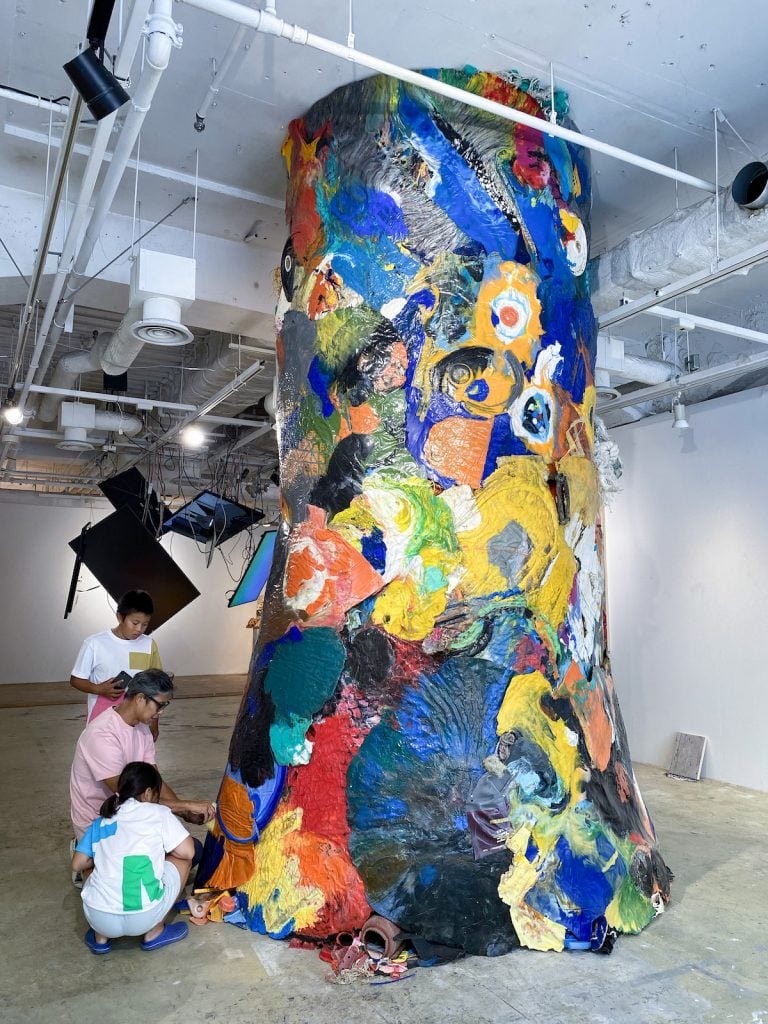
Akira Fujimoto, Babel of the Ocean.
What images or objects do you look at while you work? Do you have any other artist’s work in your studio?
Research and fieldwork are integral to my process. I use satellite images from Google Maps to locate marine debris along coastlines that are not marked on maps. I physically visit these hard-to-reach beaches, sometimes having to navigate long distances over reef beaches or approaching from the ocean side. While I don’t display other artists’ works, we frequently exchange pieces with each other.
Is there anything in your studio that a visitor might find surprising?
Visitors might be surprised by the many large artworks of unsold stock.
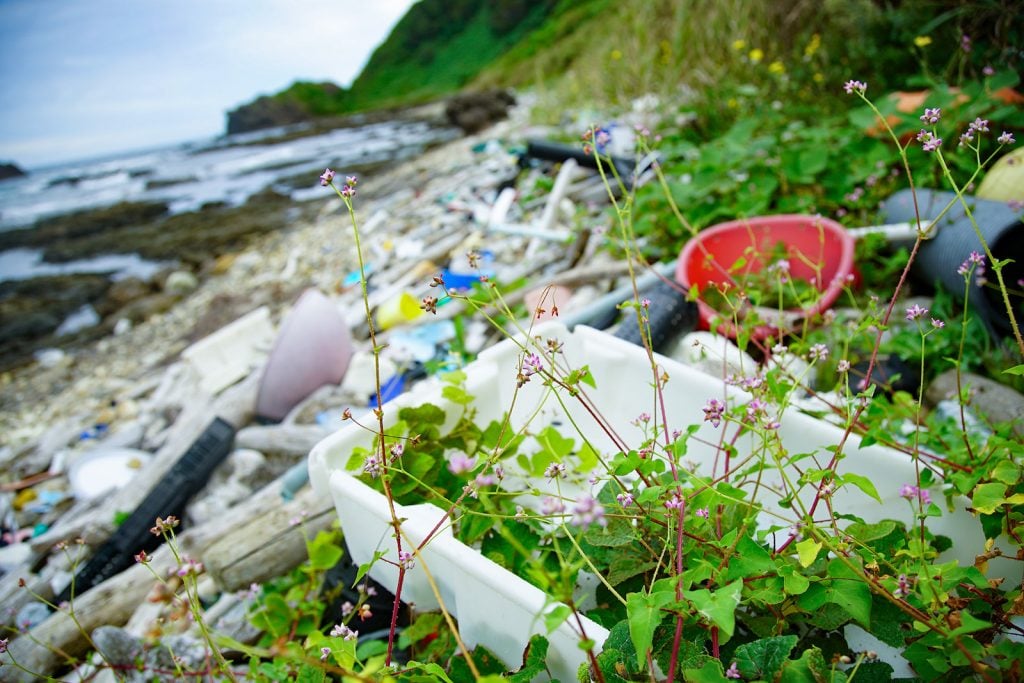
Courtesy Akira Fujimoto.
When you feel stuck while preparing for a show, what do you do to get unstuck?
When facing a creative block, I push through by trying things out, experimenting, and then reevaluating and trying again.
What’s the last thing you do before you leave the studio at the end of the day (besides turning off the lights)?
I visualize the next day’s work and make necessary arrangements.
Akira Fujimoto, Babel of the Ocean #Nature takes in, is on show at The Tokyo Edition Toranomon until December 25.
More Trending Stories:
Inspector Schachter Uncovers Allegations Regarding the Latest Art World Scandal—And It’s a Doozy
Archaeologists Call Foul on the Purported Discovery of a 27,000-Year-Old Pyramid
A Polish Grandma Found a Rare Prehistoric Artifact—And Kept It Quiet for 50 Years
Art Critic Jerry Saltz Gets Into an Online Skirmish With A.I. Superstar Refik Anadol
Your Go-To Guide to All the Fairs You Can’t Miss During Miami Art Week 2023
The Old Masters of Comedy: See the Hidden Jokes in 5 Dutch Artworks
David Hockney Lights Up London’s Battersea Power Station With Animated Christmas Trees